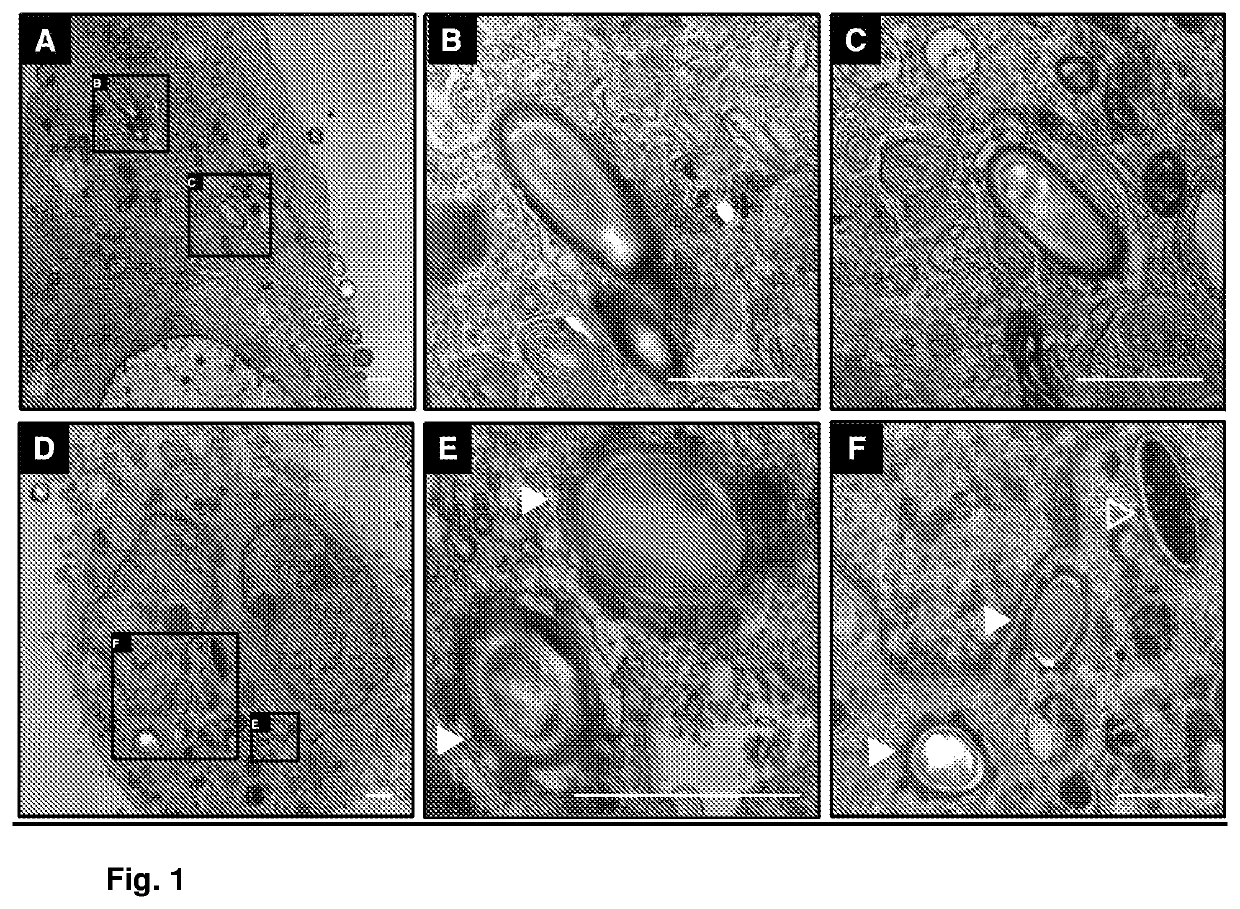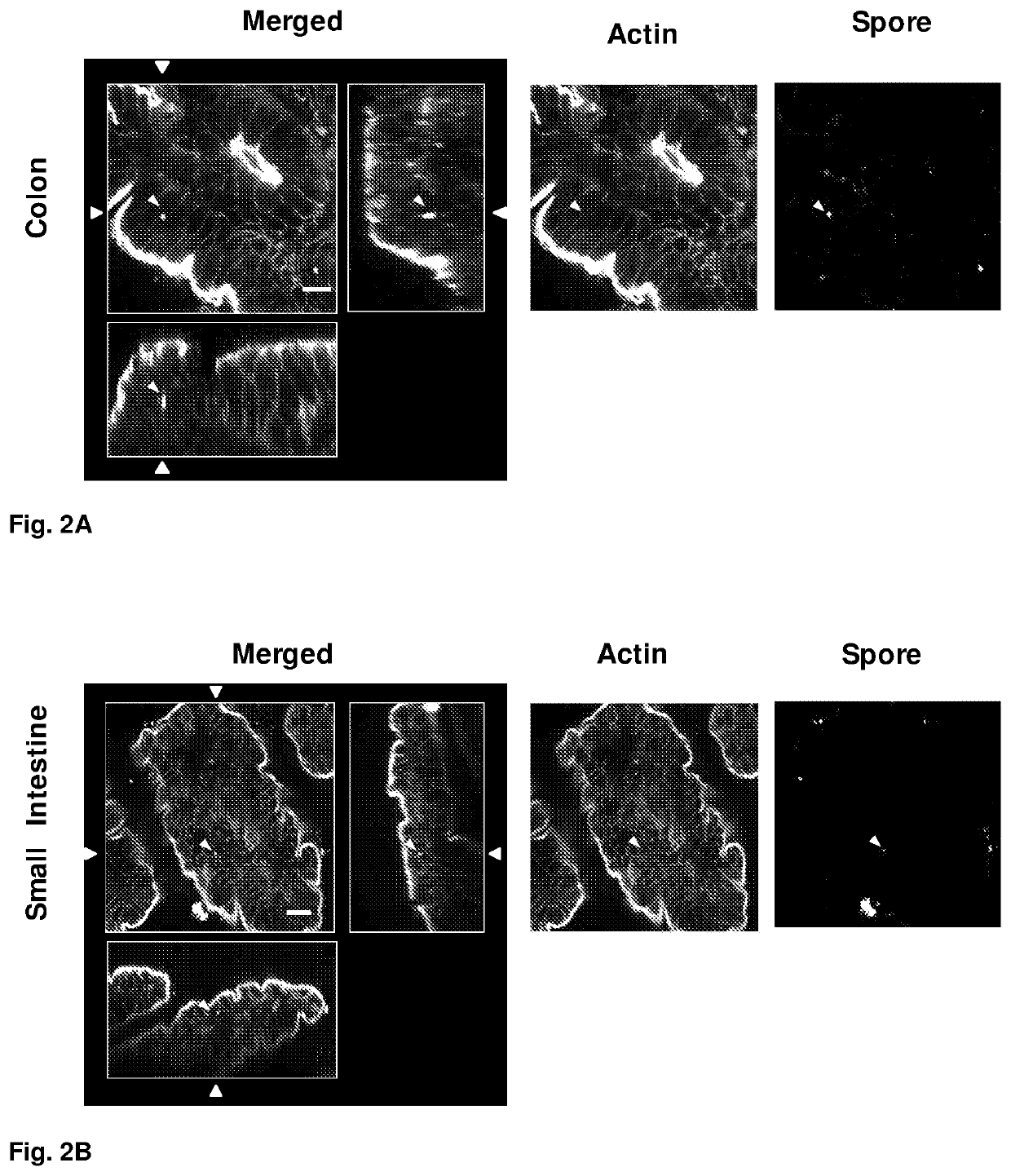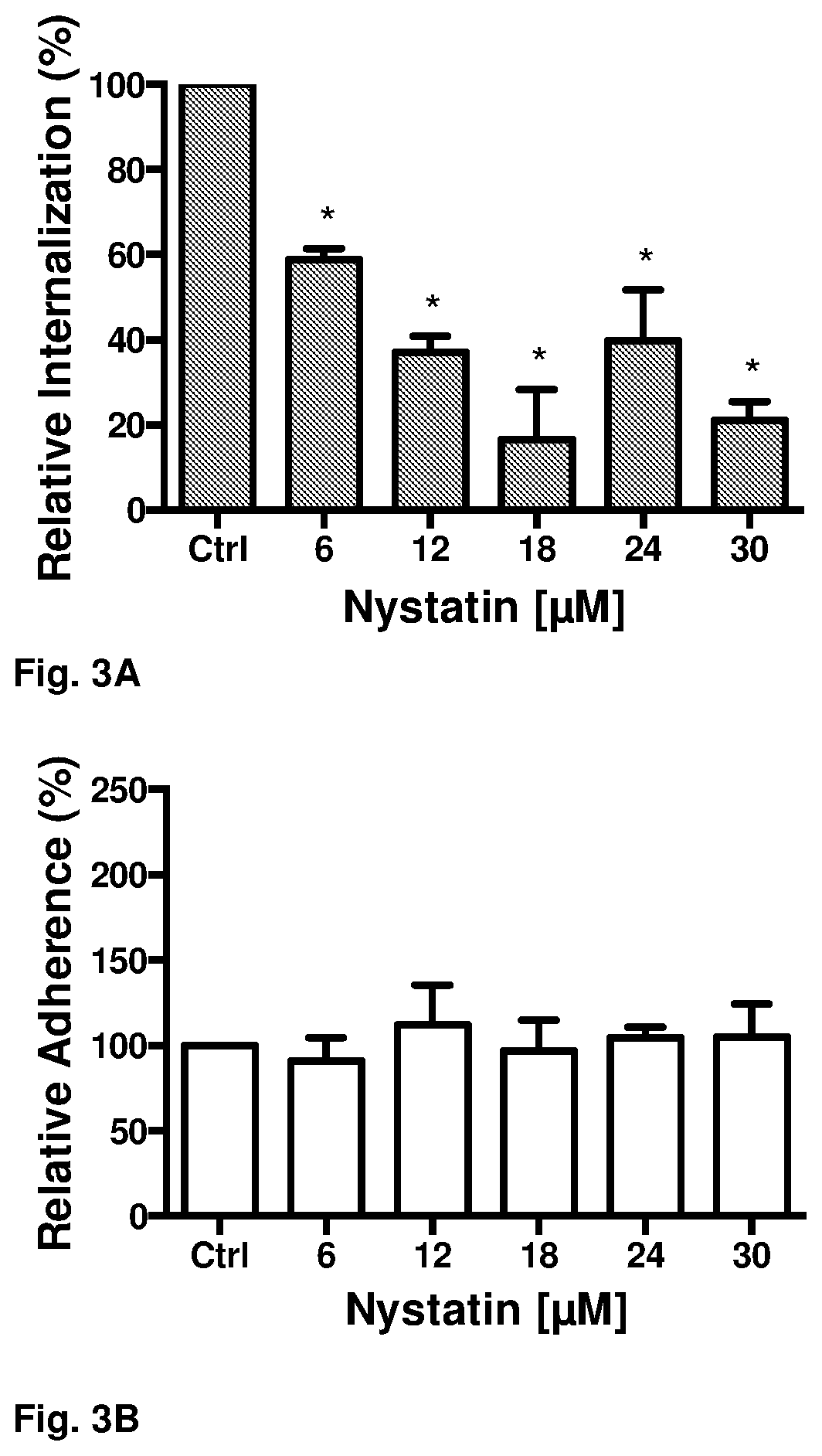Method and pharmacological composition for the prevention of recurrent infections caused by clostridium difficile
a technology of clostridium difficile and recurrent infections, applied in the direction of antibacterial agents, saccharide peptide ingredients, medical preparations, etc., can solve the problems of generating a dysbiosis status in the colon, difficult treatment for subsequent episodes of r-cdi, and inability to achieve massification, etc., to achieve the effect of inhibiting internalization
- Summary
- Abstract
- Description
- Claims
- Application Information
AI Technical Summary
Benefits of technology
Problems solved by technology
Method used
Image
Examples
application examples
Example 1
Treatment of Samples for Analysis by Transmission Electron Microscopy.
[0113]To demonstrate that C. difficile spores are capable of entering differentiated intestinal epithelial cells (IEC), Caco-2 cells were differentiated by culturing them in confluent monolayers for 8 days, and T84 cells were cultured in Transwell (Corning) up to a resistance of 1000-2000Ω (˜14 days post-confluence), and they were infected during 5 hours at MOI 20 with C. difficile spores pre-incubated with normal human serum. They were then washed to remove non-adhered spores, fixed overnight at 4° C. with a 3% glutaraldehyde solution with cacodylate buffer (pH 7.2) and stained during 30 minutes with 1% tannic acid. Subsequently, the samples were processed and dehydrated for 30 minutes in a gradient of 30%, 50%, 70%, 90% and 2 times 100% acetone, containing 2% uranyl acetate, for 30 min each. Dehydrated samples were embedded in resin at an acetone:resin ratio of 3:1, 1:1 and 1:3 for 30 min each, and embe...
example 2
[0116]Internalization of C. difficile Spores In Vivo.
[0117]Based on the results observed for the entry of C. difficile spores into intestinal cells in monolayers, we have studied whether C. difficile spores are capable of entering mouse intestinal cells.
[0118]For the in vivo study, we used 6- to 12-week old mice which were infected in the ileum of the small intestine and in the ascending zone of the large intestine by the intestinal obstruction technique for a period of 6 hours, and they were processed to be analyzed by confocal microscopy. It was observed that spores adhere to a greater extent to the small intestine than to the large intestine, and that spores adhere to the lumen of the intestinal tissue. Additionally, it can be observed that spores can enter and distribute themselves in the crypts of the small intestine, referred to as crypts of Lieberkühn (FIG. 2B). Only some spores are capable of entering crypt cells (see the spores that are indicated with an arrow head in FIGS....
example 3
Internalization of Spores is Reduced by Nystatin In Vitro.
[0121]Since C. difficile spores are endocytosed by intestinal epithelial cells and by Lieberkühn crypt cells, it is conceivable to suppose that this would be one of the mechanisms by which spores could persist in the host to cause recurrent infections. Therefore, we conducted in vitro studies searching for drugs capable of reducing spore entry. The drugs evaluated were nystatin, chlorpromazine and indomethacin.
[0122]To evaluate spore internalization, Caco-2 and T84 cells were seeded onto 24-well plates on a glass coverslip up to 2 days after confluence. The cells were then preincubated during one hour with 6, 12, 18, 24, 30 μM nystatin; 20, 40, 60, 80 and 100 μM chlorpromazine and 50, 100, 150, 200 and 250 μM indomethacin in Dulbecco's Modified Eagle's medium (DMEM) high in glucose, 1% penicillin and streptomycin. At the same time, spores of C. difficile strain R20291 were incubated at 37° C. with FBS. Then the cells were inf...
PUM
| Property | Measurement | Unit |
|---|---|---|
| weight | aaaaa | aaaaa |
| body weight | aaaaa | aaaaa |
| resistance | aaaaa | aaaaa |
Abstract
Description
Claims
Application Information
 Login to View More
Login to View More - R&D
- Intellectual Property
- Life Sciences
- Materials
- Tech Scout
- Unparalleled Data Quality
- Higher Quality Content
- 60% Fewer Hallucinations
Browse by: Latest US Patents, China's latest patents, Technical Efficacy Thesaurus, Application Domain, Technology Topic, Popular Technical Reports.
© 2025 PatSnap. All rights reserved.Legal|Privacy policy|Modern Slavery Act Transparency Statement|Sitemap|About US| Contact US: help@patsnap.com



